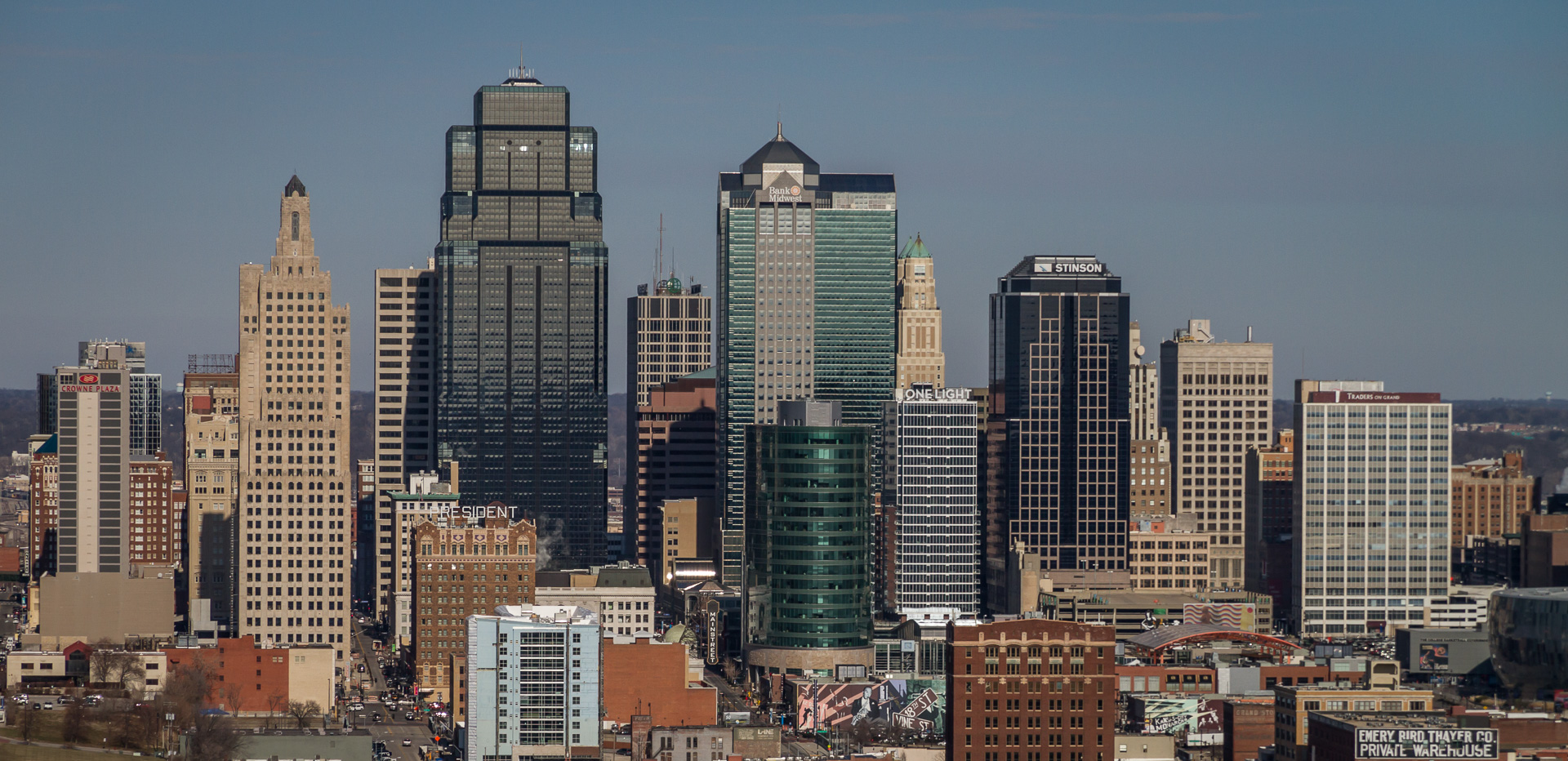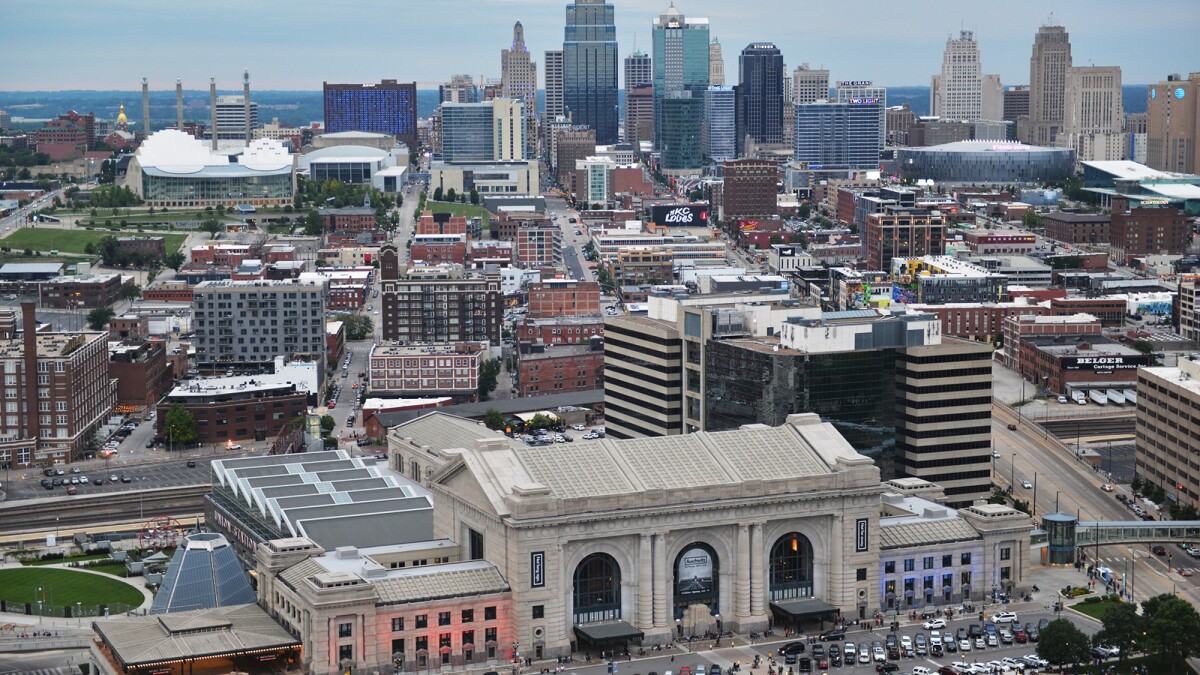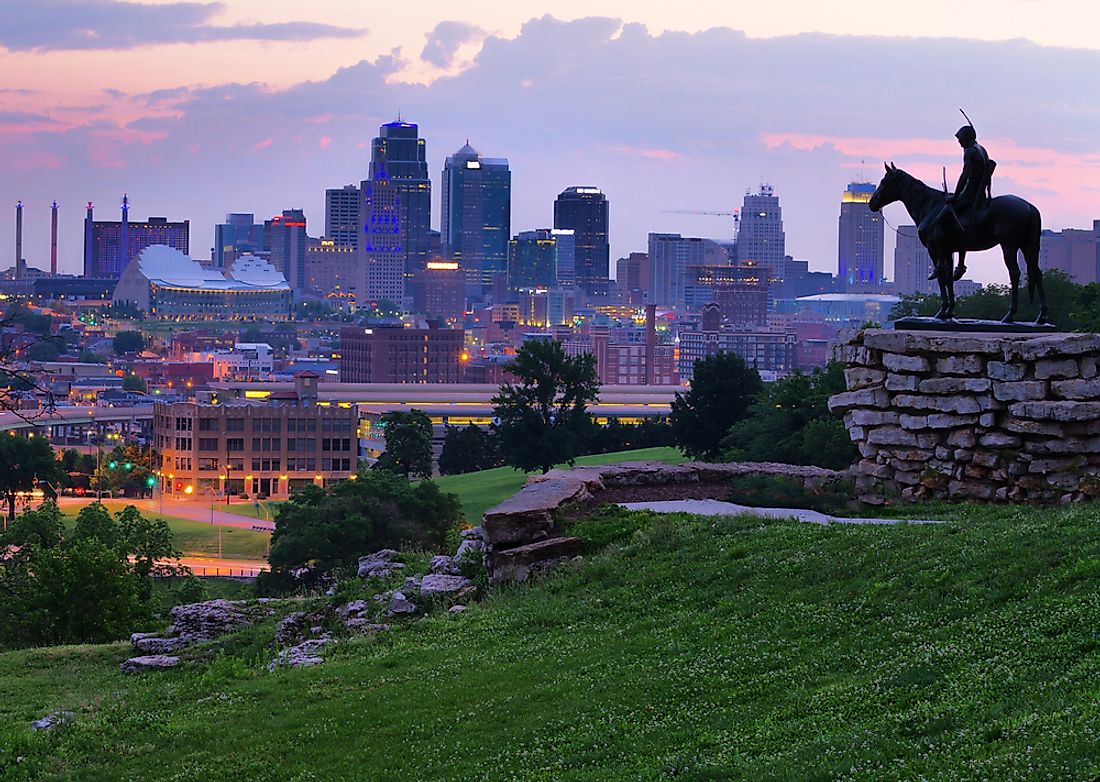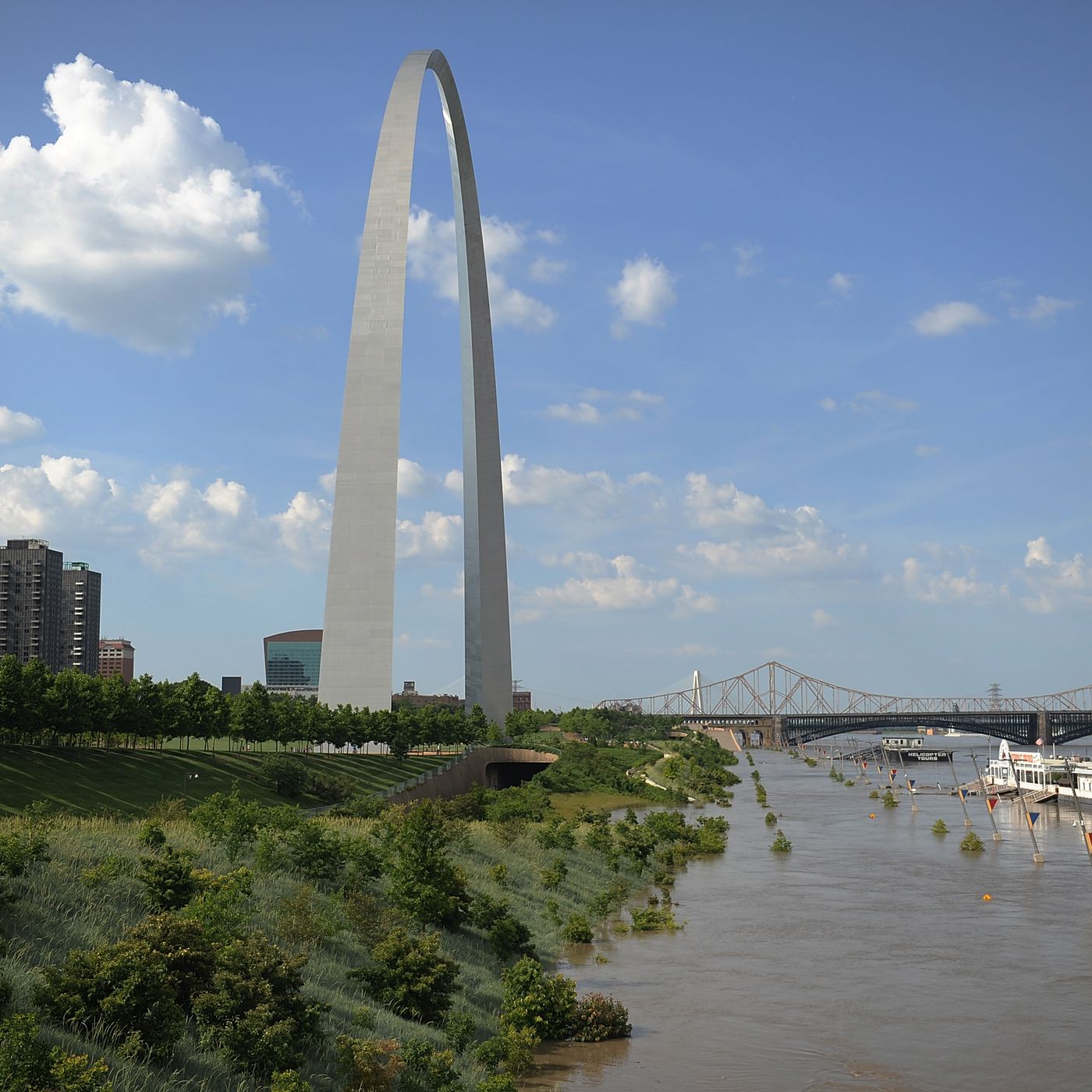Which Kansas City Is Bigger?
In the heartland of the United States, a unique geographical quirk gives rise to a compelling question: Which Kansas City is bigger? While it may seem like a simple query, the answer reveals a tale of two vibrant cities, each with its history, culture, and charm.
Author:Mia ThompsonReviewer:Calvin PenwellNov 15, 202317.6K Shares704.2K Views

In the heartland of the United States, a unique geographical quirk gives rise to a compelling question: Which Kansas City is bigger? While it may seem like a simple query, the answer reveals a tale of two vibrant cities, each with its history, culture, and charm. On one side of the state line is Kansas City, Missouri, a bustling metropolis that often takes center stage in discussions about this urban pairing.
On the other side, you'll find Kansas City, Kansas, a smaller yet significant counterpart. The contrast between these two neighboring cities, both bearing the same name, is a captivating narrative that unravels the story of size and prominence in America's heartland.
A Tale Of Two Kansas Cities
There's an exciting tale to tell regarding the topic of which Kansas City is bigger. There are two significant cities in the United States: Kansas City. One is in Missouri, and the other is in Kansas, which is right across the border. Despite having the same name, these nearby cities each have a distinct history and culture. Now, let's analyze which of the two Kansas Cities is more significant and more prominent in size.
Kansas City Vs. Kansas City
Though in different locations, there are two Kansas Cities in the Midwest that both sit and thrive along the Missouri River. In addition to Kansas City, Kansas (population: 152,000), which is mistakenly seen as a component of the greater Kansas City, Missouri metropolitan region, there is the huge city of Kansas City, Missouri (490,000).
Why Did It Happen?
These two locations did not arise simultaneously; hence, the reason for the two cities sharing the same name is different from the case of Missouri's St. Louis and its Illinoisan suburb, East St. Louis. (That being said, they are only roughly five miles away.) It may seem strange to hear this, but Kansas City in Missouri was established before the Kansas City in Kansas. While Kansas City, located in Kansas, was formally established in 1872 by combining many minor cities in Wyandotte County, the Missouri version was created in 1850.
Confusing Industry And Visitors
A local legend holds that the new city titled itself Kansas City (despite the fact that the name was already taken and so nearby) partly sprang from local jealousy that Missouri had a metropolis named after their state. To make matters worse, it was a sizable, affluent city situated along a river. In an attempt to reclaim some of the spotlight, they deliberately tried to mislead people and businesses in order to divert funds and tourists there.
Look To The River
What gives, then, for a city called Kansas to exist in a state that isn't Kansas? This is due to the fact that its name is derived from the Kansas River, which itself is called after the native Kansa people rather than the state of Kansas. Before becoming known as Kansas City, the area was known as just Kansas after it was incorporated in 1850, and the Kansas Territory was formally established in 1854. In order to avoid confusion, Kansas City, which is located just inside Missouri's borders, changed its name to Kansas City after that.
Which State Is Kansas City In?
Depending on which Kansas City is being discussed; there has always been ambiguity about its location. Kansas City is located in both the states of Kansas and Missouri. There are two Kansas Cities in the union. The names of the two cities have been the subject of debate. Because Missouri makes up the majority of the city, Kansas City in Missouri is more well-known than Kansas City in Kansas.
It is not incorrect to say that Kansas City, Missouri, borders the following state. These are two distinct cities that are separated by the same border. The region that spans the boundaries of Kansas and Missouri is known as the Kansas City metropolitan area.
Kansas City Missouri
Given that Kansas is the name of a different state, it can be very perplexing to have Kansas City in Missouri but not Missouri City. Missouri's largest city, Kansas City, serves as the hub of the Kansas City metropolitan area. The city is situated where Missouri and Kansas meet. In the 1830s, Kansas City was established. The city's primary purpose upon creation was to serve as the Missouri River port.
Jackson County is home to Kansas City. But a tiny portion of the city is located in the counties of Platte, Cass, and Clay. With a total size of about 319 square miles, it ranks as the 23rd largest city in the United States. An estimated 488,943 people are living in Kansas City as of 2017, with White people making up the majority at 59% and Black Americans at 29%.
Administration
The state's largest municipal government is located in Kansas City. The mayor serves as the head of the city council, which is governed by a council system. Twelve more people who represent the districts are also members of the city council. The elections are typically held in the fourth odd-numbered year; 2019 is the scheduled year for the next one.
Economy
The federal government is Kansas City's biggest employer. The city is home to more than 146 federal entities. The city is also one of the top ten regional hubs for US government offices. One of only two locations where the Internal Revenue Service processes paper returns is a sizable center located in Kansas City. Among the biggest businesses in Kansas include Dairy Farmers of America, the biggest dairy cooperative in the US; Sanofi-Aventis, one of the biggest pharmaceutical manufacturers in the US; and Ford Motor Company, which constructs the Ford F-150 at the Ford Kansas Assembly Plant.
Kansas City, Kansa
Kansas City, Kansas, also known as KCK, has a rich history that dates back to its founding in the mid-19th century. Here are some key historical points about the city:
- Early Settlement: The area that would become Kansas City, Kansas, was originally settled by European and American settlers in the 1830s. It was part of the Kansas Territory, and its location along the Kansas River made it an attractive site for trade and industry.
- Incorporation: Kansas City, Kansas, was officially incorporated as a city in 1872. It was formed by the consolidation of several smaller towns, including Wyandotte, which was one of the earliest settlements in the area.
- Industrial Growth: In the late 19th and early 20th centuries, Kansas City, Kansas, experienced significant industrial growth. It became a center for meatpacking, manufacturing, and transportation industries. The Kansas City Stockyards and the Kansas City Terminal Railroad were important components of this industrial expansion.
- Ethnic Diversity: The city has a history of ethnic diversity, with immigrants from various countries settling in the area. The Argentine neighborhood, for example, had a large population of Eastern European immigrants who came to work in the meatpacking plants.
- The 1951 Flood: One of the significant events in the city's history was the devastating flood of 1951. The Kansas River overflowed its banks, causing extensive damage to homes and businesses in Kansas City, Kansas, as well as other areas in the region.
- Economic Changes: Like many industrial cities in the United States, Kansas City, Kansas, faced economic challenges in the latter half of the 20th century. Changes in the meatpacking industry and other factors led to job losses and economic shifts.
- Revitalization Efforts: In recent decades, there have been efforts to revitalize and redevelop parts of Kansas City, Kansas. This has included initiatives to improve infrastructure, attract new businesses, and enhance the quality of life for residents.
- Sporting Success: Sporting events have also played a role in the city's history. Sporting Kansas City, a Major League Soccer team, has been based in the city since 1996, and the Kansas Speedway hosts NASCAR races.
- Cultural Heritage: Kansas City, Kansas, has a rich cultural heritage, with a variety of festivals, events, and museums celebrating its history and diversity. The Kansas City, Kansas Public Library and the Strawberry Hill Museum are among the cultural institutions in the city.
- Education: The city is home to the University of Kansas Medical Center, which is a major research and healthcare institution. It has also had its own public school district and various educational institutions throughout its history.
Overall, the history of Kansas City reflects the broader historical trends of westward expansion, industrialization, and urban development in the United States. It continues to be an important part of the Kansas City metropolitan area and the state of Kansas.
Why Is Kansas City, Missouri More Popular?
Compared to Kansas City, Missouri, Kansas City is more well-known. This is presumably due to the city's many attractions, which include the Plaza, the Sprint Center, Westport, Chiefs, Royals, the World War I Museum, and an abundance of water fountains. Because of these attractions, the city is a popular travel destination. Moreover, Kansas State's Kansas City was founded after Kansas, Missouri was founded. Since Kansas wasn't even a state when it was founded, only a few people were aware of it.
Which Kansas City Is Bigger - The Larger Of The Two
Missouri's Kansas City, usually just called "Kansas City," is the most populated of the two. Being the biggest city in Missouri, it serves as the hub of the Kansas City metropolitan area, which encompasses both Missouri and Kansas. With more than 500,000 citizens, as of my most recent information update in 2022, Kansas City, Missouri, has a far greater population than its Kansas equivalent.
Cultural Riches and Culinary Delights
Kansas City, Missouri, has carved a niche for itself with its thriving cultural attractions, historic jazz district, and flourishing arts sector. It has also gained acclaim for its world-class barbecue, earning it a coveted spot on the map of cuisines. Travelers from across the nation flock to witness iconic locations like the National World War I Museum and Memorial, Union Station, and Country Club Plaza.
Kansas City, Missouri, has emerged as the more popular and larger of the two cities primarily due to its extensive array of attractions, historical precedence, greater population, and its reputation for cultural richness and culinary excellence. These factors collectively make it a prominent destination and a city that continues to thrive and grow in stature.
Which Kansas City Is Bigger - FAQs
Which City Is Larger, Kansas City, Kansas, Or Kansas City, Missouri?
Because Kansas City, Missouri, was settled several decades before Kansas City, Kansas, it has always been larger than Kansas City, Kansas (originally named just 'Kansas', after the river). In reality, Kansas City, Kansas, started as a suburb of Kansas City, Missouri.
Why Is Kansas City Two Cities?
Simultaneously, Wyandotte County, in Kansas, across the border, saw the start of settlement along the river bottoms. As a result, starting in the 1850s, the Missouri-Kansas state borders separated two Kansas Cities, and neither one originated from a single entity but rather from the union of several communities.
Why Is Kansas City Split Between Kansas And Missouri?
These differences date back to the early 1800s when pro-slavery Missourians and abolitionist Kansans engaged in violent and political conflict. Since then, Kansas City, Missouri, and Kansas City, Kansas, have been split and occasionally brought together by streetcars, sports stadium restorations, and bistate tax initiatives.
Why Is Kansas City Famous?
Kansas City offers a flourishing food scene, an excellent museum collection, and a wealth of historical landmarks, everything a great American getaway could ask for.
What Is The Largest City In Kansas By Size?
Situated in the center of the United States, Wichita, the largest city in Kansas, is a vibrant travel destination.
Conclusion
The question, of which Kansas City is bigger, whether it's the Missouri side or the Kansas side, unveils a tale of duality and synergy. While Kansas City, Missouri, reigns as the more populous and often more prominent of the two, it's essential to recognize that Kansas City, Kansas, holds its significance within the larger metropolitan area. The Kansas Cities, separated by a state line, work in tandem to create a dynamic and diverse region where history, culture, and a shared name foster a sense of unity and community.
Whether it's the barbecue-rich streets of Kansas City, Missouri, or the thriving attractions of Kansas City, Kansas, both cities have their unique qualities and contribute to the collective identity of the Kansas City metropolitan area. The story of the bigger Kansas City is not one of competition but one of complementarity, where these twin cities thrive together as a testament to the rich fabric of the American Midwest.

Mia Thompson
Author
Mia Thompson is a versatile writer at Kansas Press, delving into a range of topics including news, spiritual exploration, astrology, and numerology. With a passion for delivering insightful and informative content, Mia's articles provide readers with valuable perspectives and thought-provoking insights into these intriguing subjects.
She is dedicated to creating content that resonates with readers and fosters a deeper understanding of complex topics.

Calvin Penwell
Reviewer
Since diving into numerology in 1997, my path has been marked by extraordinary encounters and insights. A pivotal moment was uncovering a forgotten numerological manuscript in a tucked-away Italian library, which deepened my connection to the ancient wisdom of numbers. Another transformative experience was a meditation retreat in Nepal's tranquil mountains, where I honed my intuition and the art of interpreting numerical vibrations.
These adventures have not only enriched my numerological practice but also my ability to guide others towards understanding their destiny and life's purpose. My approach is deeply personal, rooted in a blend of historical knowledge and intuitive insight, aimed at helping individuals find their alignment with the universe's abundant energies. My mission is simple: to share the power of numerology in illuminating paths to abundance and fulfillment.
Latest Articles
Popular Articles


